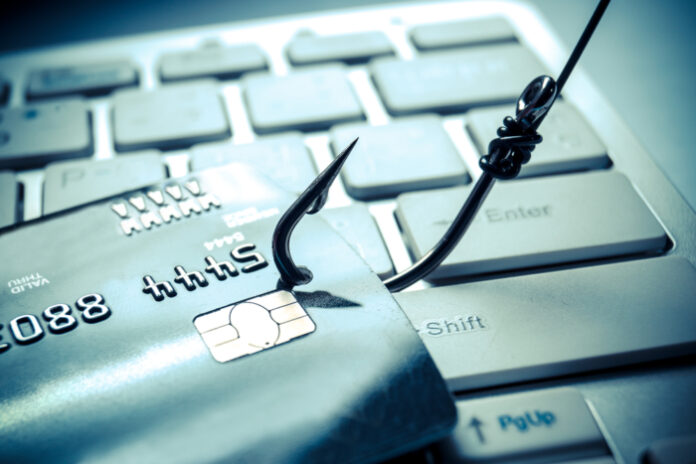In the wake of a recent high-profile data breach, understanding cyber threats has never been more critical. Among the myriad tactics cybercriminals employ, phishing and spoofing are prevalent methods used to deceive individuals and organizations alike. These deceptive strategies are not only becoming more sophisticated but are also causing significant distress and financial damage to their victims. As we delve into the intricacies of these cyber threats, it’s essential to distinguish between them, recognize their signs, and adopt robust measures to safeguard our digital lives. The digital landscape is fraught with challenges, and staying informed is our first defense. Phishing attacks often lure victims into providing sensitive information through seemingly legitimate requests, and spoofing, where attackers disguise their identity to gain trust, are serious threats that require our attention. By exploring the subtle nuances that set these tactics apart, we can better prepare to identify and thwart such attempts. Moreover, equipping ourselves with a comprehensive cybersecurity strategy and adhering to best practices for online behavior will enhance our resilience against these dangers and provide a sense of security in an increasingly connected world.
Unmasking the Tactics: Phishing and Spoofing Explained
Understanding the nuances between phishing and spoofing is critical for maintaining digital security. Phishing is a deceptive practice where attackers masquerade as trustworthy entities to extract sensitive information from victims. This tactic often involves sending fraudulent communications, such as emails or text messages, that entice users to click on malicious links or divulge personal data. On the other hand, spoofing refers to disguising communication from an unknown source as being from a known, trusted source. This can include email spoofing, caller ID spoofing, and website spoofing, among others. Cybercriminals use both strategies to breach security measures but differ in their approach and the type of deception they employ.
To safeguard against these threats, it is essential to recognize their pros and cons from a security perspective. The advantage of awareness is that it empowers individuals and organizations to implement effective countermeasures. For instance, phishing attempts can be mitigated by educating users on identifying suspicious messages and employing advanced email filtering solutions. Conversely, the downside is that these tactics continually evolve, becoming more sophisticated and challenging to detect. Spoofing, in particular, can be challenging to prevent since it exploits the inherent trust in existing communication systems. Implementing robust verification processes and staying informed about the latest security protocols are crucial in defending against these deceptive practices.
Recognizing the Red Flags: Identifying Phishing and Spoofing Attempts
According to experts at ZEN.COM, cybercriminals have become increasingly sophisticated, making individuals vigilant regarding their online interactions. One of the critical strategies for staying safe is to recognize the red flags that signal a potential phishing or spoofing attempt. Phishing often involves unsolicited communications that appear to be from reputable sources requesting sensitive information. Spoofing, on the other hand, may involve the creation of fake websites or emails that mimic legitimate ones to deceive users. To differentiate between the two, it is crucial to look for specific indicators.
To identify a phishing attempt, consider the following red flags:
- Unexpected personal or financial information requests, especially if they convey a sense of urgency or threat.
- Messages containing poor spelling or grammar can indicate that the communication is not from a professional organization.
- Links in emails or messages that lead to unfamiliar or suspicious websites. Always hover over links to preview the URL before clicking.
When it comes to recognizing spoofing, be on the lookout for:
- Emails or communications that appear to be from a known entity but have slight variations in the email address or domain name.
- Requests to verify your account or reset your password that you did not initiate.
- Any communication that asks you to download attachments or software that seems out of context or unexpected.
By being aware of these signs, you can take proactive steps to verify the authenticity of the communication before responding or taking any action.
A Cybersecurity Game Plan: Proactive Measures to Protect Against Phishing and Spoofing
To effectively shield oneself from phishing and spoofing, it is crucial to implement a robust cybersecurity strategy. Employee education is the cornerstone of this plan, as informed individuals are less likely to fall prey to these deceptive tactics. A comprehensive training program should cover identifying suspicious emails, not clicking on unverified links, and reporting potential threats to the IT department. Fostering a security culture within the organization can significantly reduce the risk of successful attacks.
Technical defenses also play a pivotal role in safeguarding against these cyber threats. Consider the following proactive measures:
- Implement advanced email filtering solutions to detect and block phishing attempts and spoofed emails before they reach the end user.
- Deploy multi-factor authentication (MFA) across all systems to add an extra layer of security, making it more difficult for attackers to gain unauthorized access even if they have compromised credentials.
- Regularly update and patch systems to protect against known vulnerabilities that attackers could exploit to carry out phishing or spoofing attacks.
- Utilize Domain-based Message Authentication, Reporting, and Conformance (DMARC), which helps email senders and receivers work together to better secure emails, ensuring that legitimate messages are properly authenticated against established DKIM and SPF standards and that fraudulent activity is blocked.
Organizations can create a formidable defense against the ever-evolving threat landscape by integrating these technical measures with ongoing education.
Navigating the Digital Battlefield: Best Practices for Email and Online Safety
As we traverse the complex landscape of the internet, it’s imperative to adopt strategic measures to shield our digital presence from the pervasive threats of phishing and spoofing. These deceptive tactics are often sophisticated and designed to slip through the cracks of our defenses, making it crucial to stay vigilant. We can fortify our online fortresses by implementing robust security protocols, such as multi-factor authentication and regular software updates. It’s equally important to cultivate a culture of awareness where every email is scrutinized for authenticity, and every request for sensitive information is met with scrutiny. Remember, the key to maintaining online safety is a proactive approach that anticipates and neutralizes threats before they manifest into security breaches.
Staying One Step Ahead: Keeping Up with the Latest Phishing and Spoofing Trends
Cybercriminals constantly evolve their tactics, making it crucial for individuals and organizations to stay informed about the latest phishing and spoofing techniques. By recognizing the signs of a sophisticated attack, users can significantly reduce their risk of falling victim. One of the key strategies is to maintain updated software and employ advanced security measures, such as multi-factor authentication, which can serve as a robust line of defense. However, it’s important to balance security with usability. Overly complex systems may lead to user frustration and potential workarounds that compromise security. Regular training and awareness programs can empower users to identify and report suspicious activities, turning them into an active line of defense. On the downside, constant vigilance can lead to ‘security fatigue,’ potentially making individuals less likely to spot threats. Therefore, it’s essential to foster a culture of security that is both effective and sustainable.
Find a Home-Based Business to Start-Up >>> Hundreds of Business Listings.

















































